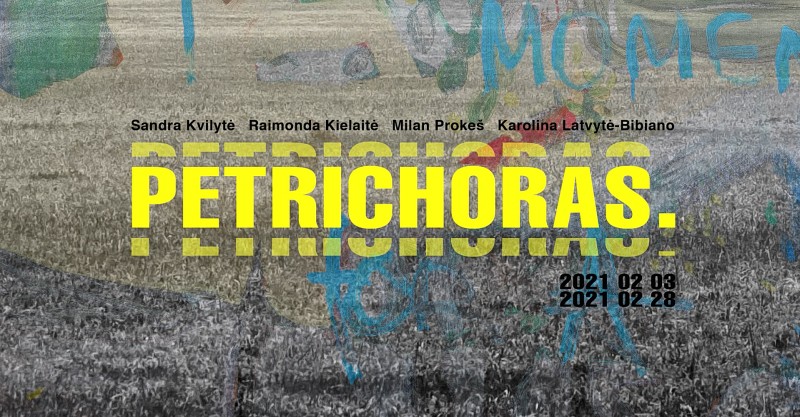Sandra Kvilytė – a painter who takes inspiration from the relationship of differences between the visible and invisible spectra. The work of this artist is dominated by sharp colors, bold forms, and deformation of objects. Observing the general environment (both the living nature and the domestic images) forces this creator to take on the role of an observer, in which her interpretation of petrichor is revealed. In an attempt to expand the boundaries of perception of everyday experience, the artist refuses to depict the external forms of objects and seeks a unique, intuitive and totally new way through which she would perceive her artistic motif.
Raimonda Kielaitė (Mone Kielė) – representative of expressive figurative painting. Thanks to this joint project, petrichor-inspired self-portraits are expressed on the canvas. The painter portrays herself in the form of a statue that symbolizes the Greek Gods, whose blood also has the meaning of petrichor. Mone Kiele envisions the connections between life and death. The question arises as to whether feeding the statues the elixirs of life would revive the stones in the same manner as the nature comes to life after heavy rain. The vegetable with earth taste – beetroot, in her paintings symbolizes ambrosia (food of the Gods). The author tells of a personal emotional experience – eating juicy beets, like the sudden visit of Petrichor, captures the moment of life’s return.
Milan Prokeš – in this particular show artist sees a large amount of similarity between natural cycles and an ongoing process of artistic creation. This concept goes hand in hand with the philosophical theory of wu wei, a teaching strategy describing action in non-action, when things are left to develop freely. The artist himself assumes not the role of a creator, but more of a coordinator, who guides the developing piece of work and gently adjusts it when the need arises. The result is creation of an authentic recording of various messages. This type of information can appear incomprehensible to our rational mind, but remains significant to our soul for it’s visual and symbolic essence.
Karolina Latvytė-Bibiano – interdisciplinary artist, whose work is dominated by the research of the relationship between nature and humans. She sees nature not only as a part of nature itself, but also as a part of a culture, that has run in parallel for decades. In this contemporary world, it is becoming increasingly difficult to understand this as a social and cultural heritage value. Thus, on the clearly visible divide between city and forest culture, the artist develops her creative search, and in this exhibition, using petrichor as a symbol she talks about this topic.
Exhibition Curator – Sandra Kvilytė.
*Due to the increasing infections of COVID-19 and current regulations Meno Parkas gallery is closed for visitors. It will be possible to view exhibition online on gallery’s social media.
Exhibition is part of gallery’s project “The Young. Green Consciousness”. Project is partly supported by the Lithuanian Council for Culture and Kaunas City Municipality.
Gallery name: Meno Parkas Gallery
Address: Rotušės a. 27, Kaunas
Opening hours: Tue-Fri 11:00 - 18:30, Sat 11:00 - 16:00
Open: 03.02.2021 - 28.02.2021







